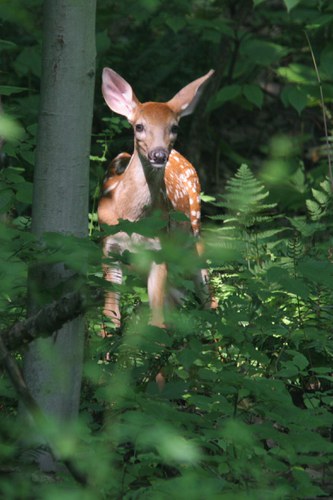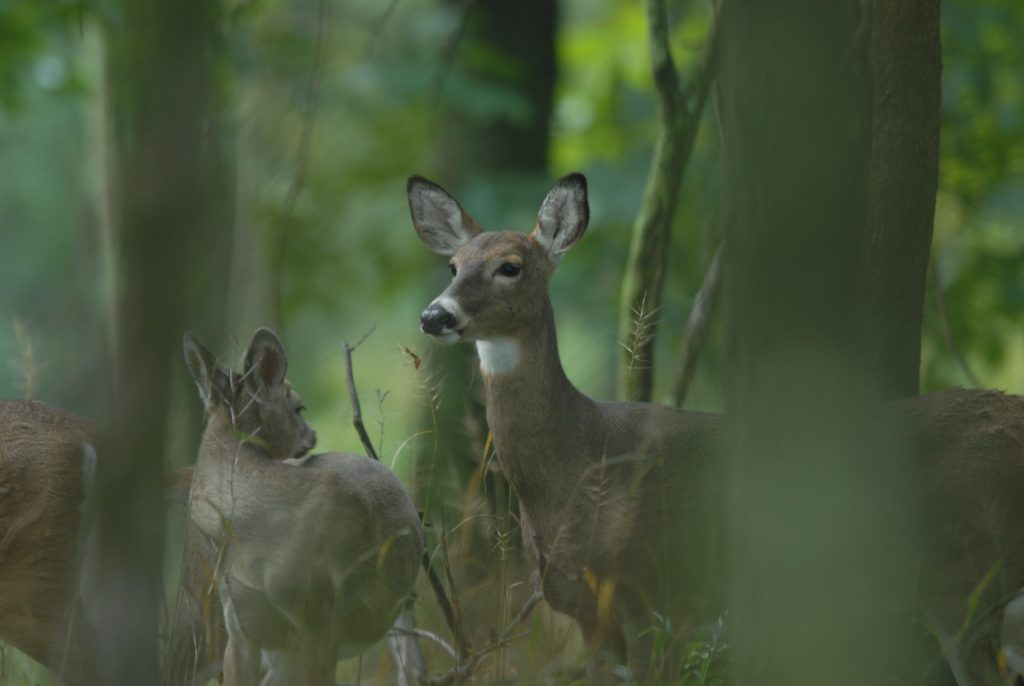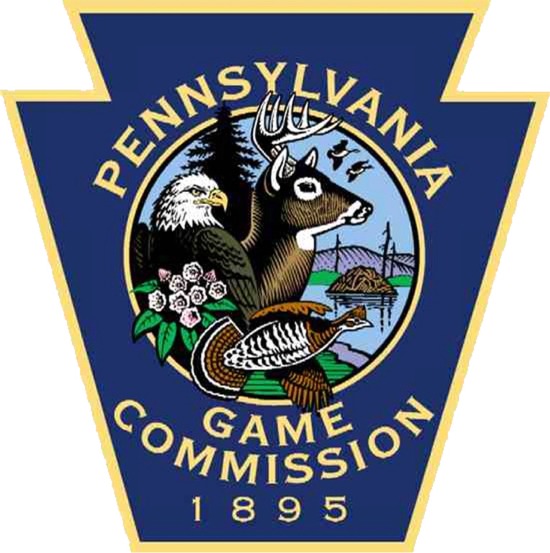He could have said the same thing about deer.
It has been my lament that females don’t get their fair share of attention because they lack those bony projections rising from their forehead.
But guess who gets the last laugh?
We all know that antler expression is the complex interplay of age, nutrition, and genetics. Well, you can add a fourth variable into the equation – maternal nutritional state.
Sorry, but all the age, nutrition, and genetics won’t help you grow big antlers if your mom was skinny. Ha! Now who’s the most important deer in the woods?!?
 Photo credit: J Dingel
Photo credit: J Dingel
For humans, prenatal care can have a profound effect on postnatal life. In the absence of prenatal care, babies are three times more likely to have a low birth weight and five times more likely to die than those who do receive care. Some sobering and convincing statistics.
It turns out prenatal care is important for deer as well. By comparing does in good vs poor quality habitats a similar pattern emerges along with a few surprising ones.
A study simulating limited food resources found fawn survival decreased 35% and fawn growth decreased 26%. Lactation is the most energetically expensive activity of any mammal. If it comes down to supporting a fawn or maintaining herself, does sacrifice today to maximize their lifetime reproductive success. She will decide to live to fawn another day, so to speak.
Another comparative study looked at maternal-nursed vs bottle-fed fawns. Maternal-nursed fawns gained 243.7 g/day. Even bottle-fed fawns receiving lesser amounts maintained a high rate of gain by increasing forage intake. But food must be available to fill in the gaps.
Ok, so let’s get to the surprising stuff. If mom lives her life in poor habitat or nutritional condition, her fawn is destined for mediocrity – a fawn that will never reach its full potential phenotypically speaking.
What am I talking about? A study conducted in South Dakota explains it all. Fawns taken from poor-quality habitat and reared with high quality nutrition through adulthood never caught up to their high-quality habitat counterparts in weight or antler expression…their ENTIRE life.
Oh, I know what you are going to say. That’s because the genetics were “better” for those taken from the high-quality habitat. Wrong!
The offspring (second generation) of those poor-quality habitat fawns had no problem attaining weight and antler scores similar to those high-quality habitat deer.
What am I saying? If mom is undernourished through pregnancy and lactation, then her male fawns are out of luck regardless of the habitat quality they reside in (e.g., even if they disperse to higher quality habitat).
Does, in fact, determine which bucks will have the biggest antlers in the woods after all. Also, the effects of doe condition on offspring potential helps us understand something about legacy effects. Even with vastly improved habitat, animal condition (especially those easily observed and measured like body weight and antler score) may not immediately respond. Instead, it may take generations to overcome the effects of poor or damaged habitat conditions to observe a change.
That may be a tough pill to swallow for a lot of people. Because it means making changes today with no guarantee of reaping the benefits as tomorrow may be farther away than you think.
Gaylord Nelson, U.S. senator, governor, and founder of Earth Day, said it best, “The ultimate test of man’s conscience may be his willingness to sacrifice something today for future generations whose words of thanks will not be heard.”
-Jeannine Fleegle, biologist
PGC Deer and Elk Section

